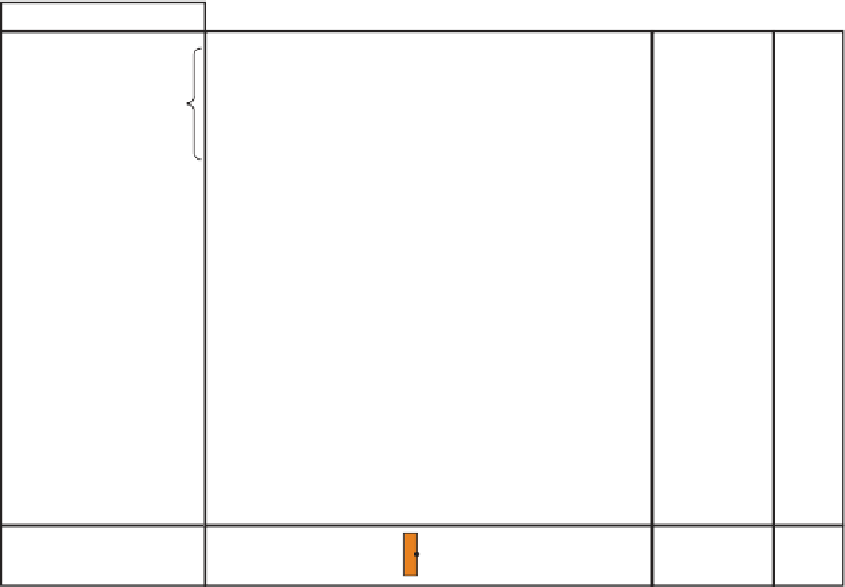Geoscience Reference
In-Depth Information
molecule and releasing another free chlorine atom
which can react and destroy more ozone. Although the
details are still not fully understood, the levels of ozone
in the stratosphere have been declining, especially over
Antarctica in spring, when very cold temperatures prevail.
Concentrations have fallen by over 50 per cent since the
mid-1990s (see box, p. 50) and are not yet reacting to the
limits on production of CFCs. As well as affecting ultra-
violet levels at the surface, and the implications for skin
cancer, the degree of heating in the stratosphere will
decrease, changing its temperature structure and perhaps
its circulation. CFCs are very effective absorbers of long-
wave radiation, so any increase in their concentration will
lead to an increase in the natural greenhouse effect.
Figure
9.16
shows the relative contribution of these different
factors to radiative change.
Direct warming of the atmosphere by waste heat also
affects atmospheric temperatures. Estimates of global
energy production have indicated that 8
through time because of this effect coupled with heat
storage by buildings.
Feedback effects
Whilst external and internal forcing systems may give rise
to changes of climate, the results are not always as
straightforward as we might expect because of the
complex interactions which take place within the
Earth-atmosphere system. Our climatic system consists of
several subsystems, such as the atmosphere, the oceans,
the ice sheets and the land surfaces. They are all closely
related as a system, and changes in one may affect the
others. Moreover, changes within one of the components
may act as positive or negative feedback, ultimately
influencing inputs of solar radiation to the ground surface.
These feedback mechanisms are likely to have been
responsible for many of the more rapid fluctuations in
climate that have occurred throughout Earth's history.
Positive feedback leads to more dramatic and far-
reaching changes. The initial effect is magnified, so that
quite small changes in the environment produce major
10
6
MW are
generated annually, most of it in densely populated urban
and industrial areas. Long-period temperature records at
city-centre sites usually show an increase of temperature
RF Terms
Spatial scale
LOSU
Global
High
CO
2
N
2
O
Long-lived
greenhouse gases
Halocarbons
Global
High
CH
4
Continental
to global
Ozone
Stratospheric
Troposperic
Med
Stratospheric water
vapour from CH
4
Global
Low
Local to
continental
Med
- Low
Land use
Surface albedo
Black carbon
on snow
Continental
to global
Med
- Low
Direct effect
Total
aerosol
Continental
to global
Cloud albedo
effect
Low
Linear contrails
Continental
Low
Global
Low
Solar irradiance
-2
-1
0
1
2
Radiative Forcing (W m
-2
)
Figure 9.16
Global average radiative forcing (RF) estimates and ranges in 2005 for anthropogenic carbon dioxide (CO
2
),
methane (CH
4
), nitrogen oxide (N
2
O) and other important agents and mechanisms, together with the typical geophical extent
(spatial scale) of the forcing and the assessed level of scientific understanding (LOSU).
Source: IPCC (2007)





























































































